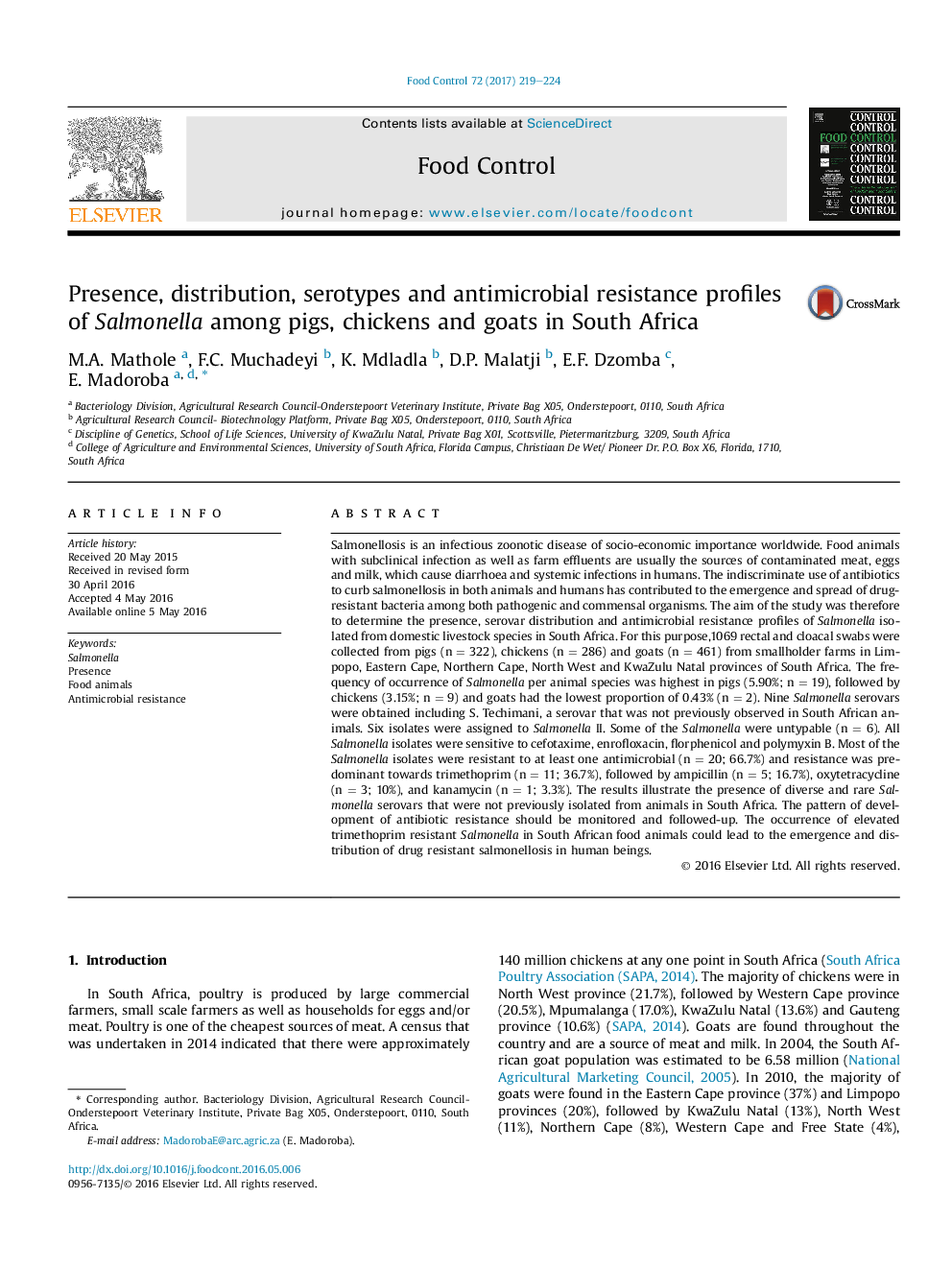| کد مقاله | کد نشریه | سال انتشار | مقاله انگلیسی | نسخه تمام متن |
|---|---|---|---|---|
| 5767358 | 1413194 | 2017 | 6 صفحه PDF | دانلود رایگان |
- Salmonella Techimani, which is a rare serovar was isolated mainly from pigs in this study.
- Approximately 67% of the Salmonella spp isolates were resistant to tested antimicrobials.
- There is need for regular Salmonella spp national surveillance and control programmes.
- There is need for regular antimicrobial resistance national surveillance in animal production.
Salmonellosis is an infectious zoonotic disease of socio-economic importance worldwide. Food animals with subclinical infection as well as farm effluents are usually the sources of contaminated meat, eggs and milk, which cause diarrhoea and systemic infections in humans. The indiscriminate use of antibiotics to curb salmonellosis in both animals and humans has contributed to the emergence and spread of drug-resistant bacteria among both pathogenic and commensal organisms. The aim of the study was therefore to determine the presence, serovar distribution and antimicrobial resistance profiles of Salmonella isolated from domestic livestock species in South Africa. For this purpose,1069 rectal and cloacal swabs were collected from pigs (n = 322), chickens (n = 286) and goats (n = 461) from smallholder farms in Limpopo, Eastern Cape, Northern Cape, North West and KwaZulu Natal provinces of South Africa. The frequency of occurrence of Salmonella per animal species was highest in pigs (5.90%; n = 19), followed by chickens (3.15%; n = 9) and goats had the lowest proportion of 0.43% (n = 2). Nine Salmonella serovars were obtained including S. Techimani, a serovar that was not previously observed in South African animals. Six isolates were assigned to Salmonella II. Some of the Salmonella were untypable (n = 6). All Salmonella isolates were sensitive to cefotaxime, enrofloxacin, florphenicol and polymyxin B. Most of the Salmonella isolates were resistant to at least one antimicrobial (n = 20; 66.7%) and resistance was predominant towards trimethoprim (n = 11; 36.7%), followed by ampicillin (n = 5; 16.7%), oxytetracycline (n = 3; 10%), and kanamycin (n = 1; 3.3%). The results illustrate the presence of diverse and rare Salmonella serovars that were not previously isolated from animals in South Africa. The pattern of development of antibiotic resistance should be monitored and followed-up. The occurrence of elevated trimethoprim resistant Salmonella in South African food animals could lead to the emergence and distribution of drug resistant salmonellosis in human beings.
Journal: Food Control - Volume 72, Part B, February 2017, Pages 219-224
